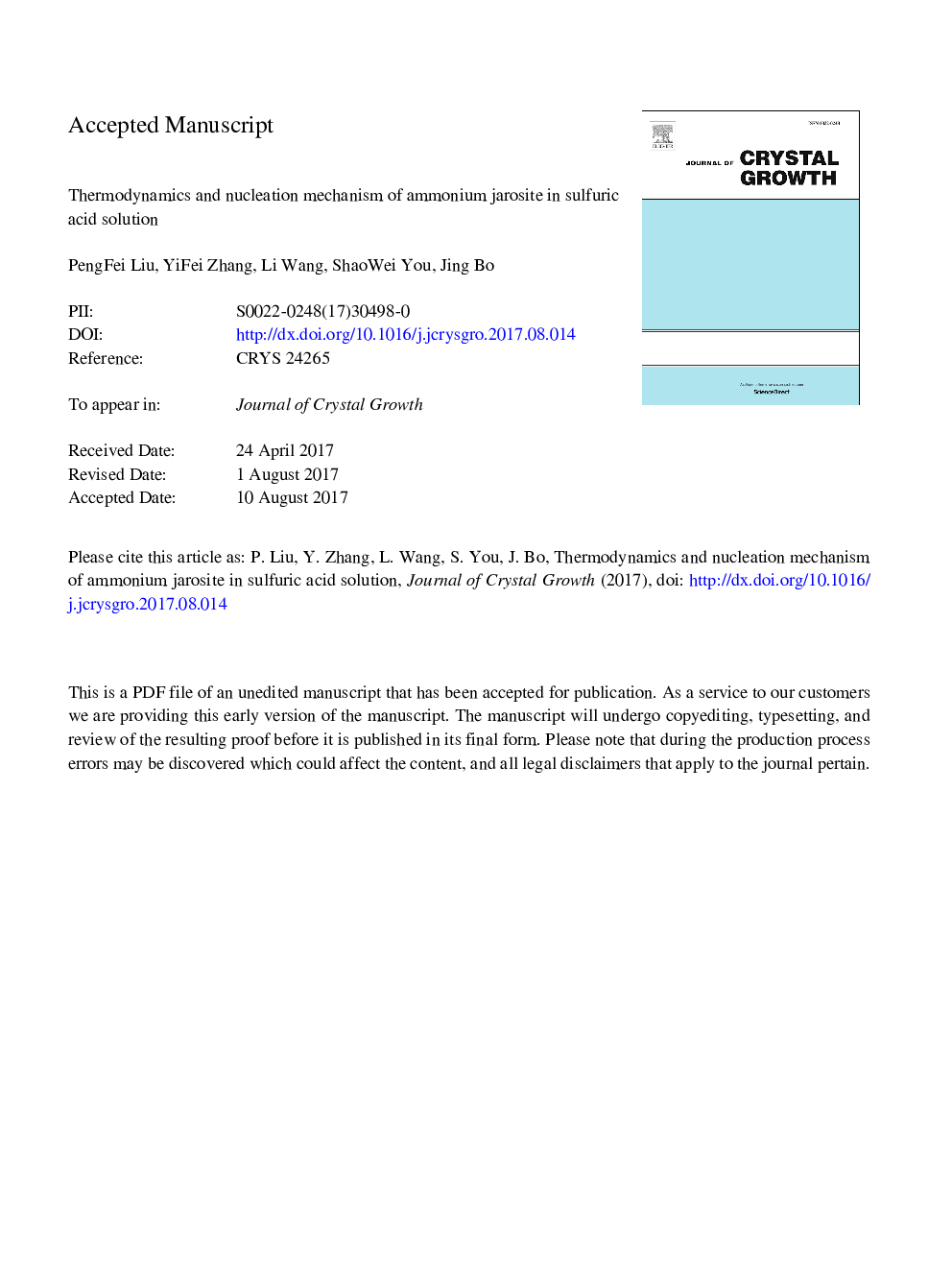| Article ID | Journal | Published Year | Pages | File Type |
|---|---|---|---|---|
| 5489066 | Journal of Crystal Growth | 2017 | 24 Pages |
Abstract
Jarosite process is one of the most widely used methods in removing Fe, but in which the nucleation mechanism of ammonium jarosite has not been reported. Solubilities of the ammonium jarosite crystals under different Fe2(SO4)3 and (NH4)2SO4 concentrations and under different temperatures were measured, and the experiments of induction periods were systematically investigated in different temperatures (348Â k, 358Â k and 368Â k) and H2SO4 concentrations (9Â g/L, 10.8Â g/L and 12.6Â g/L) by reaction crystallization process based on the thermodynamic equilibrium data. According to the model of classical nucleation theory, the interfacial tension and the surface entropy factors in different conditions were calculated as 1.21Â mJ/m2, 1.85Â mJ/m2, 1.71Â mJ/m2 and 1.51, 1.27, 1.17. The SEM photographs of (H3O, NH4)Fe3(SO4)2(OH)6 approved that the ammonium jarosite crystals were clearly grown by the two-dimensional nucleation mechanism and/or the spiral growth mechanism. But the growth mechanism of (H3O, NH4)Fe3(SO4)2(OH)6 had been determined to be the continuous growth by the surface entropy factor.
Related Topics
Physical Sciences and Engineering
Physics and Astronomy
Condensed Matter Physics
Authors
PengFei Liu, YiFei Zhang, Li Wang, ShaoWei You, Jing Bo,
